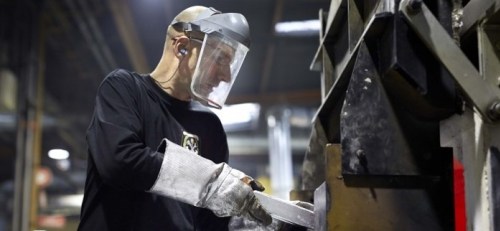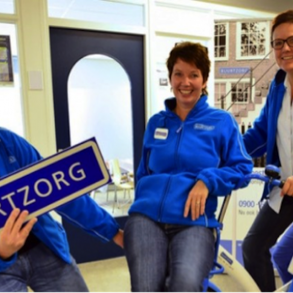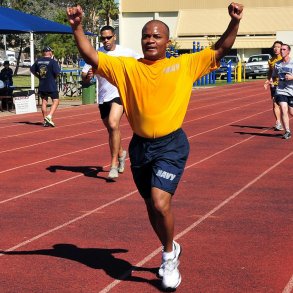Part two of the ongoing transformation of the redesigning of FAVI’s organizational structure
Written by Joost Minnaar and Pim de Morree, originally published in Corporate Rebels
Part 1 of this blogpost was re-published here in Enlivening Edge Magazine.

In part 1 of this blog post we discussed the unusual story of how Jean François Zobrist became CEO of FAVI and why he broke down the organization’s command-and-control structures. In this part we will discuss how he redesigned FAVI’s organizational structure and how this led to amazing results. But as Jean Francois notes, this is just a testimony that can be used as a source of inspiration, not a model to copy. As he told us: “I strongly believe that there are no universal models, as there are no models that can give a soul to a collective. What can be done is to listen to testimonies and get inspiration from them.”
The birth of a change
Based on the assumption that ‘the human is considered good’ and a frustrating personal experience with a broken lawnmower forced Jean François to redesign the organizational structure. Jean François: “I was aware that in order to become a responsive organization, decisions needed to be made by the workers themselves, directly on the production floor. I believe that a good employee is an employee that takes initiatives. All our employees were taking initiatives when they were at home, but our organizational structure was solely focused on preventing any form of initiative from the same employees. I felt the need to remove this structure and designed a new one based on so called mini-factories. A structure that consisted solely of two layers; operators and leaders.”
The path to change
The path of change seems motivated by a constant quest for a better future. Jean François: “When you expect that the other side of the river will be very beautiful, then you are eager to cross the river. But how do you cross the river? There are two ways.
The first way can be described as follows: Leaders of the tribe search for experts from other tribes who successfully crossed rivers before. These experts will tell them how they built the bridge. The experts get inspiration from existing bridges and design plans for their own bridge, fitted to their river. Then they build the bridge and let the entire community cross.
This is the classical way and it works. The disadvantage of this method, however, is the time necessary to study, design and build the bridge. During all this time the river, the riverbed and the shape of the bank might have changed. This may lead to the fact that we will arrive not exactly on the place where the expert had planned us to arrive at the beginning of the process.
The second way and a different approach can be described as follows: When the leaders decide to cross, then we go! We search for the first stone on where we can put a foot and move. When the stone doesn’t feel stable, we will abandon it and search for a more stable one. When we find a stable one we will search for a second stone, then a third stone, a fourth stone, and so on. When we don’t find stones anymore, we will go back to find another path. While we are going forward we are integrating the ongoing evolution in our process. In this way we will cross faster and the path will define the place of arrival. We will know exactly where we go but we do not know how.”
The moment Jean François decided to introduce the new structure into the organization he told his managers: “We don’t tell people what to do anymore, but we lead. We don’t reward or reprimand, but we lead by example. We don’t control but we help the people to measure their own results. How? I don’t know. But what I know is that we have an extraordinary chance. Many organizations are blocked by their shareholders who want to get involved in everything the organization does. We have only one shareholder and he leaves us with all the freedom to act as we want. As long as we respect the laws. The only thing we have to do is to agree among all of us on what we want to do. That is really not so complicated.”
An informal network of mini-factories
Jean François came up with the idea of a network of mini-factories. All working together to serve the client as good as possible. A typical mini-factory consists of 20 to 35 operators and its leader. The mini-factory solely focuses on one client or one specific product. Each mini-factory is painted in his own color and sometimes even features the logo of its particular client. The team of every mini-factory is supposed to elect its own leader. The leader must always be an operator who has been working for several years within the factory and is often regarded as an experienced and recognized leader. The level of education is of no importance.
The leaders are supposed to take up all the responsibilities, taking everyone within the team in mind. Among many things, they decide about salaries, holidays, recruiting, hiring, on-boarding and training. The leaders are the ones that are in direct contact with the clients and enjoy complete independence in this process. No influence from any kind of management is desired nor allowed. The leaders only report to their clients and to their operators, not to anyone else internally.
Step by step evolution
The idea of the mini-factories was not designed at once but it was rather a product of a constant evolution that developed itself step by step. Jean François: “Only later, I discovered that I had created a new role. The role of the leaders on which I was heavily relying. All the leaders were former production workers with a minimum of 3 years experience on a machine. They were all young (20-25 years old) and enthusiastic. I was very close to them and therefore unconsciously bypassed the operational role of the managers.
As the managers went into retirement, one by one, we decided not to replace them. Over time we reached a unique structure with only two hierarchical levels in production left. Operators and their leaders. The process was slow though. During several years a few managers remained. They had major difficulties giving up their power within the organization. But all of them accepted eventually, mostly because of the collective will of the organization to work differently.
But whatever this revolution would bring us, it was out of the question to fire anyone in the process. It was only necessary to have the courage to tell the former managers: “I’m ashamed to tell you, but during all these years I let you do things without you being able to develop yourself. I propose you to stop. I give you all the freedom and all the time necessary for you to find something to do that will be more constructive for you and for the organization. Of course your salary and position will not be put into question.”
The mini-factories operate freely within an informal network of factories, without any form of centralized coordination. It is like an ecosystem of autonomous cells that are always able to find ad hoc solutions to problems that arise from their clients or by the evolution of the market. The mini-factories have a few particular interesting characteristics that make them highly efficient, adaptive and productive. Jean François based them mainly on what he calls the 4 principles of the prostitute.
The 4 principles of the prostitute
1. Show yourself. If you stay closed in your room, you will never get new customers. You will have to show yourself. Show yourself to your clients, to potential clients, to your families, to your friends, to the mayor and to all the ones that might be useful for you.
2. Use make-up, excessively, to catch the attention. At FAVI they do the same, they clean their machines and paint them in bright colors.
3. You need to have one or two specialties. One can argue that if a prostitute doesn’t do anything more or better than at home, then everybody will stay at home. You need to do the same. Together you need to try to achieve more for your clients.
4. Don’t transmit diseases. If you do, you will lose your clients but also the friends of your clients. And one can argue that when you are cured, all your clients prefer not to take any risk anymore and will go somewhere else.
The Results
To Jean François, making money is the main source of a healthy and progressive organization. Jean François: “Money should not be the goal of the company, but it should be the main source. Like breathing is the main source of life. Money is for the organization what breathing is for the human being. Because without making money the organization will not live long.
And nobody seems to be joking about breathing. I don’t know any religion in which one does not breathe on Friday afternoon or on Sunday morning. Like nobody is joking about breathing, nobody should joke about profit. We can discuss how we will share it, but it must always be there. To make money we need sales, and sales is like the pickup process.”
The pickup process
Jean François: “As young men we like to flirt. Often the difficulty is not to have sex but to bring the girls to the bed first, the place of performance. That’s why we first bring the elected one to a disco or pub to share our vision. When there is a common vision, and if the vision is accepted we start to look for a room. Eventually we protect ourselves, and then we act. Sometimes, and always awkwardly, we ask about an evaluation of the performance.
In this anecdote I see different roles. The role of the sales representative that takes care of getting the clients in the bed of the company. The R&D department will undress the clients. The quality department acts as the protection before we act: they control and secure therefore the quality. It is the production that eventually performs and revises the way we were executing. At last we have the administration, but often we don’t give too much importance to those inquiring about the result.”
The introduction of the new mini-factories got immediate success. Against everyone’s expectations, productivity started to increase. And it increased significantly. Jean François: “At that time we did lots of metal cutting work. In the factory there were around twenty hydraulic presses aligned, all operated by women. And the same women, on the same machines, were now producing 20% more pieces per shift. And I observed a second unexpected effect. Normally everyone arrived at 6.00 AM in the factory to wait in front of the time-clock. Now, everyone arrived at 6.00 AM at their workplace and started their working day directly. The same happened in the evenings. Suddenly it became common to witness a worker stay another 15 minutes to finish filling up their cart for that day. Normally workers would already finish their day of work and would be waiting in front of the time-clock for several minutes.”
Time was passing by gradually and Jean François was approaching his sixties. The business was doing great. The average production time of their main products went down from 11 days to only 1 day. For over 25 years FAVI achieved over 20% net cash flow every single year. They gained a 50% market share in the European automotive industry. As one of the only ones in their sector they managed to keep their factory in Europe where other suppliers had to move to low-cost manufacturing countries. In all those years they never delivered late and they never increased the prices of their products. Moreover, the employee turnover was very low, 38% of the staff was working at FAVI for at least 15 years.
The Aftermath
But Jean François’ will to retire grew after working for 47 years in the company. In 2003 he announced this desire to the then only shareholder of FAVI (Max Rousseau passed away in 2000, and it was Max’s wife being the president now). She promised him not to sell the business if he was able to select and nominate his own successor. Moreover, she demanded that he would train his successor for several years before he could retire. Jean François accepted.
In October 2003 Jean François asked Dominique, working at FAVI for many years already, to succeed him as the next CEO. Dominique was surprised, refused the job at first but eventually took on the challenge. Jean François: “In December 2003 I made my last speech announcing that from January 2004 my successor would be Dominique.” Successively Jean François would be training Dominique till 2009, but would not put one step on the production floor anymore. Jean François: “When operators where asking me questions in this period I would respond: Go see Dominique, I don’t know that anymore!”
Jean François left FAVI in 2009 (but he would stay till 2014 as an active administrator) and eventually left Dominique in charge of the company. But Dominique had to deal with new shareholders. Max’s grandson, a lawyer by training, took over the majority of the stocks. And he felt a strong need to bring order in the ‘mess’. First, they introduced tighter control over subcontractors and reduced the strong focus on clients. Soon after, the freedom of the employees slowly started to disappear and increased control appeared under pressure of the new shareholders.
Love of the customer
Jean François: “In short, you will be able to bring order in the ‘mess’. You will end up with a company that is perfectly organized, managed and controlled. But without any customers! You will think about everything except about the love of the customer.
It takes 10 years of work, of rigorous work, to earn the respect and love of a customer. It takes a month to lose this love. It is often impossible to win back a lost love. And without the love of your customer you will not survive!”
Over time the new shareholders forced Dominique to move FAVI into this new direction. Dominique tried desperately to preserve the unique culture based on freedom and trust but could not prevent the new shareholders from destroying it. FAVI started to outsource the manufacturing to Asia and the prices of their products began to rise. Since then, many operators have left the company and the company’s profit margins have dropped drastically. The net cash flow decreased quickly, which led to even tighter control.
Jean François: “As a result the 20% net cash flow first dropped till 15%, then to 10%. And today only 5% is left. Surely, next year the net cash flow will be dropped till 0%. The more the net cash flow went down, the more the shareholders increased the control. Subsequently, the increased control led to unhappy workers leading to poor results. It’s a vicious circle. To me this is the prove that there is a direct relation between the happiness of productive people and the net cash flow. Happy workers make happy customers who make happy shareholders.”
Unfortunately, at FAVI the famous “20% years” are over.
Permission to republish granted by the author.
Featured Image/Graphic link added by Enlivening Edge Magazine.




